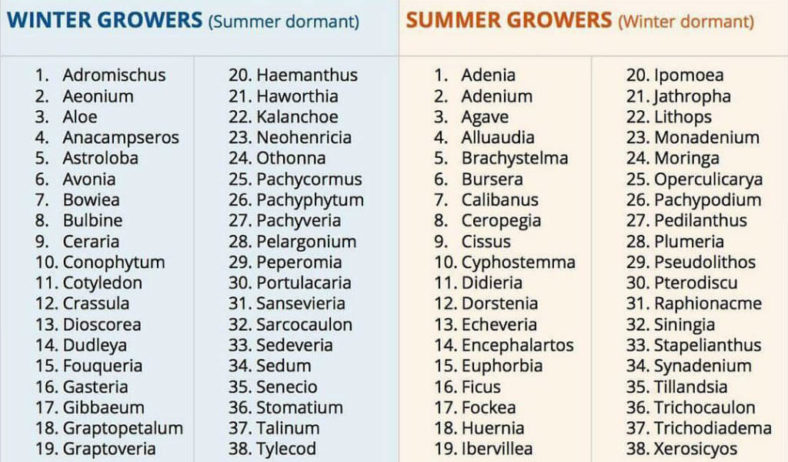Succulents are resilient and can look beautiful all year round, but there are some times of the year when they become inactive. Therefore, you need to know when to expect their active growing season and the dormant period to adjust appropriate care techniques.
Different succulents grow at different rates within a year, depending on the temperature. Some can become dormant, grow more slowly when the weather is too hot or too cold, and turn active again when the temperatures are ideal for their growth. Most succulents tend to thrive in spring and fall.
They can also be put into two categories: summer growers and winter growers. Summer growers are succulents that thrive in the summer and become dormant during the winter. On the contrary, winter growers grow actively in winter and slow down in the summer. Therefore, it is not recommended to repot your succulents during their dormancy, as this can disturb their "deep sleep."
Check out this succulent dormancy table below for a rough idea of the dormant period for different succulent genera.

The temperatures at which succulents go dormant vary depending on the species. Sempervivums are cold-hardy and can tolerate frost, but may go dormant at temperatures below freezing. However, Echeverias are more tender and can go dormant at higher temperatures. Some signs indicating that a succulent starts "sleeping" are that it stops producing new growth completely. The leaves may turn yellow or brown and either drop off or hang limply from the sides of the succulent stem. In some rosette-forming succulents, the rosettes might contract.
It is essential to research and determine the optimal time of year for your succulents to go dormant, so you do not overwater them and inadvertently cause damage or death. For example, when a summer-growing succulent enters its dormant period in the winter, it shifts into survival mode and stops growing actively. Therefore, it does not need a lot of water. However, give it a little water if the leaves get dry and wrinkled. Otherwise, in most cases, you do not even need to water it at all and can leave it alone until its growing season arrives.
It is different for winter-growing succulents. They go dormant in the heat of summer, but still need water during this time to help their roots remain cool and prevent the leaves from drooping. More importantly, if you grow your succulents indoors, they will never go dormant. Therefore, you can continue watering them on the same schedule throughout the year.
Understanding succulent dormancy is a crucial aspect of providing excellent succulent care. If you are concerned about the health of one of your succulents, check the calendar and succulent dormancy table. If the plant is often dormant at this time of year, refrain from making drastic care changes. Wait for it to resume active growth before cutting back or changing its care. You may well discover that it was not suffering but simply dormant.
Source: succulentsbox.com
Links
- Succupedia: Browse succulents by Scientific Name, Common Name, Genus, Family, USDA Hardiness Zone, Origin, or cacti by Genus